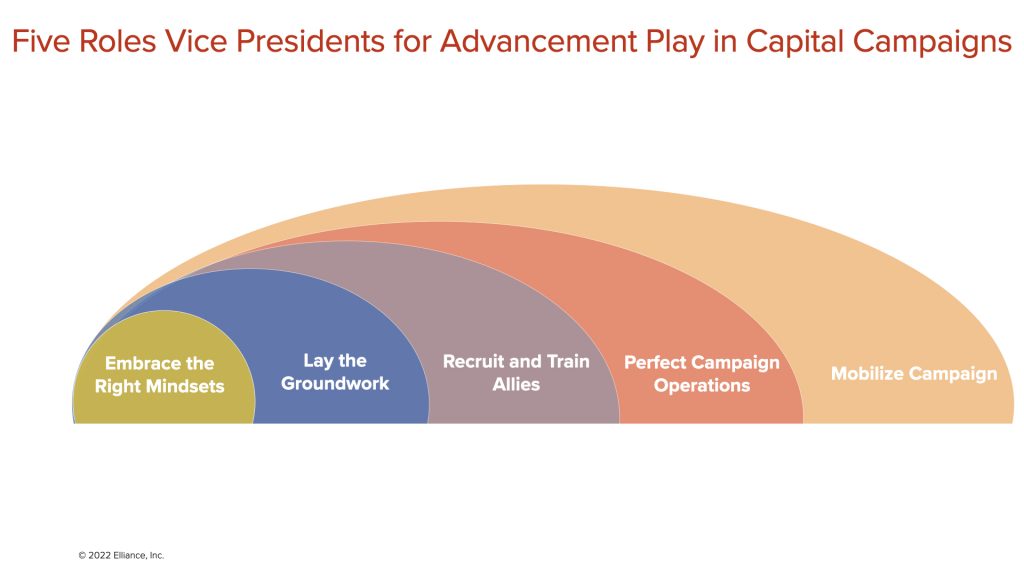| Jan 8, 2022
Five Roles Vice Presidents for Advancement Play in Capital and Comprehensive Campaigns

This post was informed by our agency experience with clients and partially inspired by my reading of Jim Langley of Langley Innovations’ books on fundraising.
“If I only had an hour to chop down a tree, I would spend the first 45 minutes sharpening my axe.” – Abraham Lincoln.
This sentiment specifically applies to vice presidents for advancement when planning, launching and implementing capital and comprehensive campaigns. They create a culture of giving, increase gift size and improve gift productivity by playing these five crucial roles:
Embrace the Right Mindsets & Skillsets
- Understand the distinctions and relationships between strategic planning, advancement, development and fundraising.
- Know the difference between capital campaigns and comprehensive campaigns, and deploy them appropriately.
- Understand student and alumni appreciation for the faculty, staff and the institution.
- Possess the skillset and experience in not only planning and launching a campaign but also sustaining complex operations in the field for a number of years.
Lay the Groundwork
- Know whether alumni truly believe that the value of their degree far exceeded the cost of their education.
- Understand the appreciation and engagement of the institution by parents, corporations, nonprofits and government institutions.
- Have already deployed practices that instill student, alumni and donor loyalty, engagement and volunteerism.
- Go beyond obvious prospects. Develop deep constituent engagement throughout the campaign and beyond to create a richer pipeline of purpose-driven prospects.
- Build greater philanthropic capacity through various means of affiliation.
- Begin with a detailed campaign plan that includes strategy, people, process, tactics, tools and milestones to implement a successful campaign.
- Build a strong case statement with three foundational components: problem, solution and impact.
- Shape a compelling vision with input and consultation with board members, presidents, faculty, staff, alumni and friends of the institution.
Recruit and Train Allies
- Identify faculty and staff champions for each initiative.
- Identify potential lead donors for each campaign priority.
- Implement volunteer management plans.
- Train the advancement team and board members for advocacy.
Perfect Campaign Operations
- Oversee creation of high fidelity, high impact, proof based, imaginative and endearing marketing assets.
- Customize appeals for major donors, women donors, entrepreneurial donors, legacy donors, corporate donors and foundation donors.
- Equip major gift officers with donor intelligence including biography, organizational loyalties, giving history, and their passions and personal values.
Mobilize Campaign
- Orchestrate all activities of the fundraising team, campaign chair, planning committee, steering committee, board members, and volunteers.
- Test with pilot initiatives, and then scale the campaign.
- Give ample time for the campaign to succeed.
- Collect all pledges.
- Thank donors graciously and provide periodic progress/accountability reports.
In the next blog post, I’ll share the characteristics of a successful capital and comprehensive campaign.
Learn more about Elliance philanthropic marketing services.
